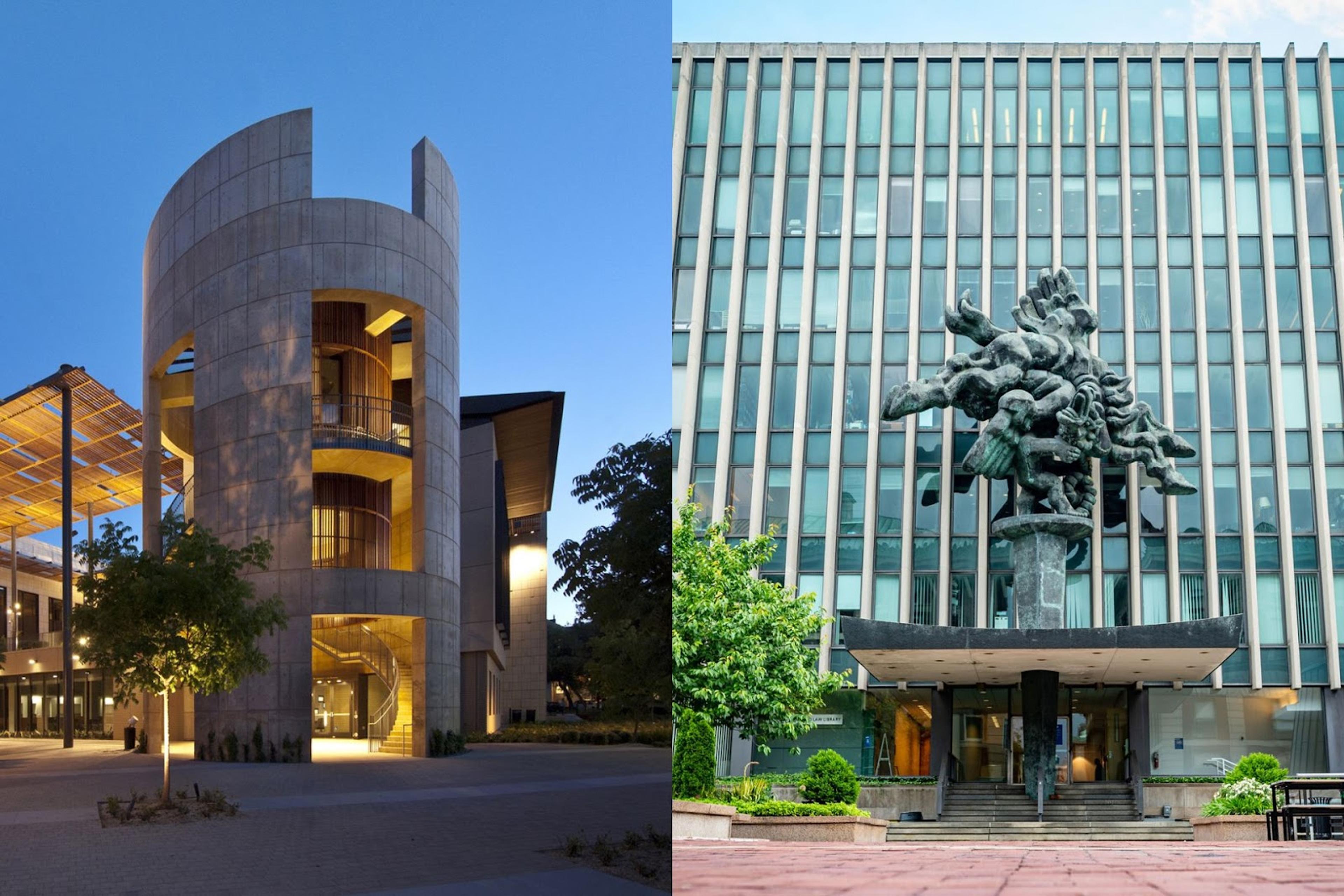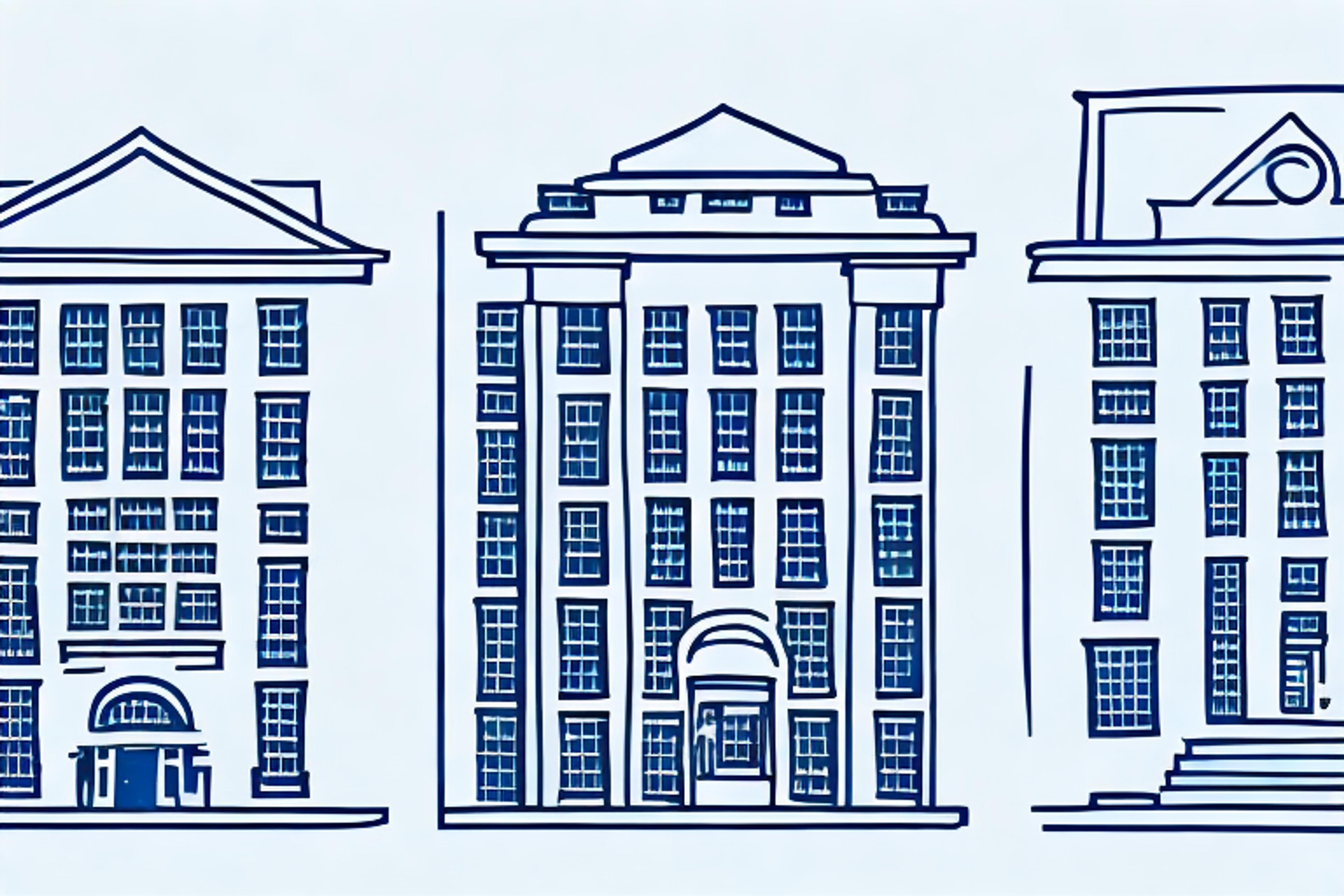New York University School of Law Vs. University of Michigan--Ann Arbor Law School: An In-Depth Comparison
Are you considering law school but can't decide between New York University School of Law and University of Michigan--Ann Arbor Law School? Look no further! Our in-depth comparison breaks down everything from curriculum to campus culture to help you make the best decision for your future legal career..
Posted March 6, 2025

Table of Contents
When it comes to choosing the right law school, aspiring legal professionals need to consider a variety of factors. From location and ranking to curriculum and diversity, different law schools offer distinct experiences that can shape students' skills, expertise, and career prospects. In this article, we'll take an in-depth look at two of the top law schools in the US: New York University School of Law and University of Michigan-Ann Arbor Law School. By comparing their similarities and differences across a range of dimensions, we aim to help prospective students make informed decisions about their legal education and future career paths.
Introduction: Breaking Down the Top Law Schools in the US
Before we dive into the specifics of NYU and UM law schools, it's worth noting that both institutions have strong reputations and rankings within the legal community. According to the latest U.S. News and World Report, NYU Law is ranked #6, while UM Law School is ranked #8. Both schools offer rigorous academic programs, extensive resources, and diverse student populations that draw top-tier applicants from around the world. However, there are also key differences between these schools that may influence students' choices, depending on their priorities and goals.
One major difference between NYU and UM law schools is their location. NYU Law is located in the heart of New York City, which offers students unparalleled access to legal resources, networking opportunities, and cultural experiences. On the other hand, UM Law School is located in Ann Arbor, Michigan, which provides a more traditional college town atmosphere and a strong sense of community among students. While both locations have their advantages, students should consider which environment would best support their personal and professional goals.
Location, Location, Location: Comparing the New York and Michigan Law School Experience
One of the most notable differences between NYU and UM Law is their location and cultural context. NYU Law is situated in the heart of New York City, a bustling metropolis known for its vibrant legal, financial, and cultural industries. As such, students at NYU have access to a diverse array of legal internships, clerkships, and practical opportunities that can help them gain real-world experience and connections. Additionally, New York City is home to many legal advocacy organizations, public interest groups, and global law firms that offer employment opportunities to law graduates. However, living in New York can also be expensive and hectic, and the city's competitive culture may not suit everyone.
In contrast, UM Law is located in Ann Arbor, a smaller college town in Michigan that offers a more relaxed and student-oriented atmosphere. The campus is surrounded by scenic parks and nature reserves, providing ample opportunities for outdoor recreation and relaxation. However, Ann Arbor is far from the legal hub of New York, and students may need to travel further for internships or employment opportunities after graduation.
Another important factor to consider when comparing the law school experiences at NYU and UM is the diversity of the student body. NYU Law is known for its international student population, with students from over 70 countries represented in the student body. This diversity can provide a unique perspective on legal issues and help students develop a global network of contacts. On the other hand, UM Law has a more regional focus, with a majority of students coming from the Midwest. This can provide a strong sense of community and connection to the local legal market, but may not offer the same level of exposure to different cultures and perspectives.
Ranking and Reputation: How NYU and UM Stack Up Against Each Other
While both NYU and UM are highly-ranked law schools, they have different strengths and areas of focus that set them apart. NYU Law is renowned for its expertise in international law, business law, and intellectual property law, as well as its strong alumni network and reputation among top law firms. UM Law, on the other hand, is known for its excellence in litigation, public interest law, and interdisciplinary legal studies, as well as its commitment to diversity and inclusivity. However, rankings and reputations can be subjective and fluctuate over time, and it's important for students to consider other factors beyond reputation alone.
Curriculum and Specializations: Which Law School Offers What?
The academic programs at NYU and UM Law schools offer different options and specializations that cater to students' interests and career goals. NYU Law offers a wide range of courses and clinics in areas such as human rights, tax law, corporate law, and environmental law, as well as joint degree programs in business, journalism, and public policy. UM Law offers a variety of courses in trial advocacy, public interest law, and social justice advocacy, as well as joint degree programs in social work, public health, and business. Both schools also have strong legal writing and research programs that prepare students for rigorous legal practice.
Student Body Diversity: Analyzing Demographics and Inclusivity at NYU and UM
Diversity and inclusivity are important considerations for students who want to study law in a supportive and inclusive environment. NYU Law boasts one of the most diverse student bodies among leading law schools, with an enrollment that includes 44% students of color and 51% women. Additionally, the school has strong institutional commitments to diversity and inclusion, such as the Center for Diversity, Inclusion, and Belonging, which offers resources and programming to promote equity and inclusion in the legal profession. UM Law also has a diverse student population, with 22% students of color and 51% women, and has implemented several initiatives to increase diversity and equity among its faculty, staff, and student body.
Admissions Process: Requirements, Acceptance Rates, and Important Deadlines
Getting into top-tier law schools like NYU and UM can be a competitive and challenging process. Both schools have rigorous admission requirements, including standardized tests, undergraduate transcripts, personal statements, and letters of recommendation.
According to the latest data, NYU Law received over 6,000 applications for its incoming class of 2023, with an acceptance rate of 28%. UM Law received over 5,700 applications for its incoming class, with an acceptance rate of 30%. Students who are interested in applying to these schools should keep in mind the deadlines for application materials and financial aid, as well as any supplemental requirements that may apply.
Faculty and Staff Quality: Examining Professors and Support Staff at Both Institutions
The quality of the faculty and staff at NYU and UM law schools can greatly impact students' experiences and outcomes. NYU Law has over 100 full-time faculty members, including renowned scholars and practitioners in various fields of law. Additionally, the school offers a Visiting Professor Program that brings in eminent legal experts from around the world to teach and research. UM Law has over 70 full-time faculty members, including leading experts in areas such as civil rights and constitutional law, as well as dedicated support staff and mentors who work closely with students throughout their legal education.
Career Prospects: Post-Grad Opportunities for NYU and UM Law Students
After graduation, NYU and UM law students have many career paths to choose from, including law firms, government agencies, public interest organizations, and academia. NYU Law graduates have a strong track record of success in the private sector, with over 73% of the class of 2019 securing jobs in law firms and corporate legal departments. Additionally, NYU Law has a robust public interest career services office that offers resources, workshops, and fellowships for students interested in pursuing public service careers. UM Law graduates also have a high rate of employment in law firms, with 62% of the class of 2019 working at law firms, and 10% pursuing public interest law. UM Law also offers a comprehensive career services office that provides job search support, alumni mentorship, and professional development opportunities.
Extracurricular Activities: Organizations, Competitions, and Student Life Beyond the Classroom
Law school is not just about academic coursework; it's also about engaging in extracurricular activities that can enrich students' personal and professional development. Both NYU and UM law schools offer a wide range of student organizations, competitions, and events that cater to diverse interests and backgrounds. NYU Law has over 80 student-led organizations, including the International Refugee Assistance Project, the Moot Court Board, and the Latino Law Students Association. UM Law has over 60 student organizations, such as the Women Law Students Association, the Environmental Law & Policy Society, and the Law & Economics Society. Additionally, both schools have active moot court, mock trial, and negotiation teams that compete nationally and internationally.
Costs and Financial Aid: Breaking Down Tuition, Fees, Scholarships, Loans, and More
One of the biggest considerations for students when applying to law school is the cost of attendance and available financial aid options. NYU Law's tuition for 2020-2021 is $68,934, with additional fees and living expenses that can add up to over $100,000 per year. However, NYU Law offers a range of merit-based scholarships, need-based grants, and loan repayment programs that can help offset the cost of attendance for eligible students. UM Law's tuition for 2020-2021 is $60, 790 for non-Michigan residents, with additional fees and expenses that can reach over $90,000 per year. UM Law also offers various scholarship and financial aid options, including grants, loans, and work-study programs, that aim to reduce the financial burden for students.
Alumni Networks: Examining the Success of NYU and UM Graduates in the Legal Field
The alumni networks of NYU and UM law schools can play a crucial role in students' post-graduation career paths, as they offer valuable connections, mentorship, and support. NYU Law has a large and active alumni community, with over 40,000 graduates working in a variety of legal and non-legal fields across the globe. Notable alumni include U.S. Supreme Court Justices, high-profile judges and litigators, as well as CEOs and entrepreneurs. UM Law also has a strong alumni network, with over 16,000 graduates working in diverse organizations and sectors. Notable alumni include U.S. Senators, Nobel Laureates, and legal pioneers.
Conclusion: Which Law School Comes Out on Top?
As we've seen, comparing NYU Law and UM Law requires careful consideration of multiple factors, including location, ranking, curriculum, diversity, admissions, faculty, career prospects, extracurricular activities, costs, and alumni networks. Ultimately, the decision of which law school is right for you depends on your individual priorities, goals, and values. While NYU Law offers a dynamic and globally-oriented legal education in the heart of New York City, UM Law provides a rigorous and socially-conscious legal education in a smaller and more affordable college town. Both schools have their strengths and weaknesses, and both offer excellent opportunities for legal education and professional development.











